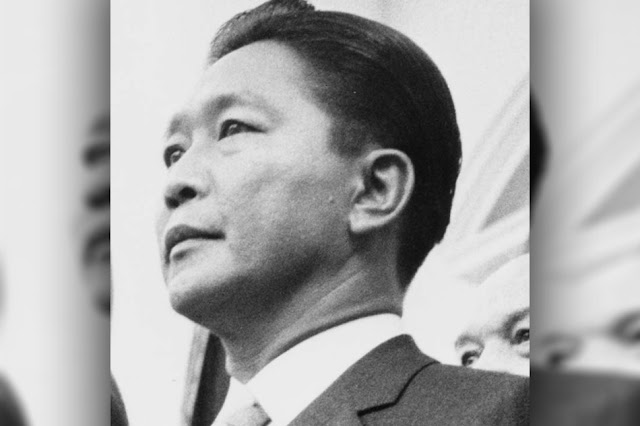GADGET SALES AND PROMOS
Wednesday, 7 September 2016
EDSA revolt not valid reason to block Marcos burial, says SolGen
The 1986 People Power Revolution which ousted President Ferdinand Marcos from power cannot be a ground for not allowing the burial of the late dictator at the Libingan ng mga Bayani, Solicitor General (SolGen) Jose Calida said.
During last week's oral arguments at the Supreme Court, Senior Associate Antonio Carpio argued that by virtue of the successful revolution, Marcos was dishonorably separated as president and dishonorably discharged as commander-in-chief.
Thus, Marcos may not be qualified for interment in the heroes' cemetery, Carpio said, if an Armed Forces of the Philippines (AFP) regulation is to be followed.
The AFP regulation states that soldiers who were dishonorably discharged from service are not qualified to be buried at the cemetery.
Calida, however, argued that a military officer can be dishonorably discharged only through court martial proceedings for violating articles of war while he is in active duty.
''The argument that his ouster in the 1986 EDSA Revolution is tantamount to a honorable discharge from the military service finds no support in the AFP regulation,'' Calida said.
''He was neither dishonorably discharged from service nor convicted by final judgment of an offense involving moral turpitude… At the time of his ouster, Marcos had long been a civilian."
Calida argued that under AFP regulations, Marcos is qualified to be buried at the cemetery because he was a ''medal of valor awardee, a former president and commander-in-chief, a war veteran and a statesman."
The petitioners in the case, who include victims of human rights violations during the dictatorship, are opposing Marcos' burial at the hero's cemetery, saying allowing it will whitewash the late dictator's sins.
They said, under Republic Act 289, which mandates the establishment of a National Pantheon for presidents of the Philippines, national heroes and patriots, Marcos cannot be buried at the hero's cemetery since he is not worthy of emulation.
Calida, however, said this argument is flawed, as the government has never actually built the National Pantheon being referred to in the law.
He said the Libingan ng mga Bayani traces its origin not from RA 289 but from General Order 104 dated October 3, 1902.
"The history of the applicable guidelines pertaining to the Libingan will show its name is a misnomer as there is no standard defining what a hero is. Petitioners cannot insist that Libingan is for heroes only," he said.
"As a matter of fact, records will show that even three chief justices, widows of AFP chiefs of staff, and national artists are interred at the Libingan. It is absurd that these persons were allowed to be interred at the Libingan and yet a former president will be disqualified."
Despite strong resistance from several groups and sectors, President Rodrigo Duterte has been firm in his decision to allow the burial.
Calida said Duterte's landslide victory in the polls should be seen as a public approval of his decision to allow the burial, which is one of his campaign promises.
e added, the late dictator's only son and namesake Bongbong Marcos' near victory in the May 2016 vice-presidential race shows that the "national trauma" with regard to the Martial Law regime is no longer present.
"The vox populi is too deafening to be ignored," he said.
A hero's burial will mark a high point in the Marcos family's political comeback, which was severely set back by the narrow loss of the younger Marcos against Leni Robredo last May.
The late dictator's body was returned to the Philippines in 1993, four years after he died while in exile in Hawaii. He was overthrown by a military-backed popular revolt in 1986.
Subscribe to:
Post Comments (Atom)

No comments:
Post a Comment